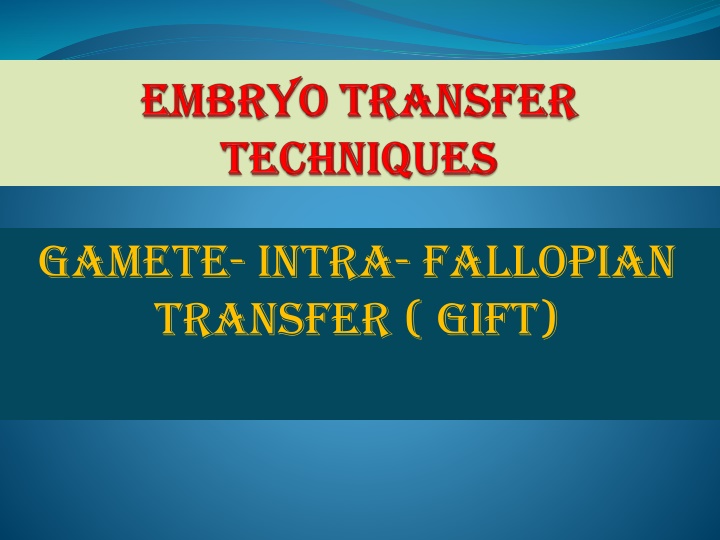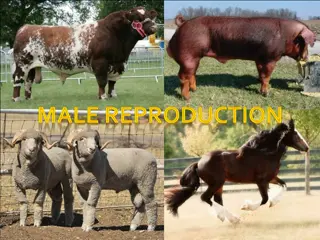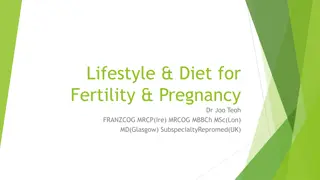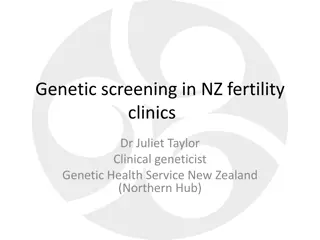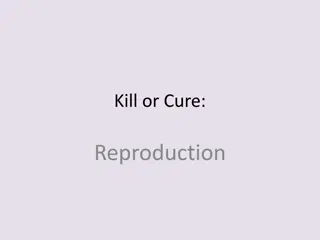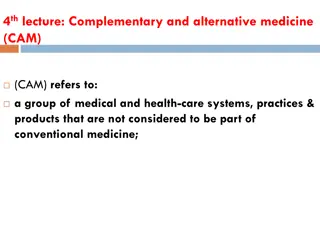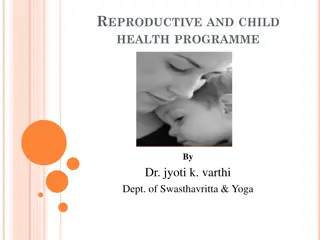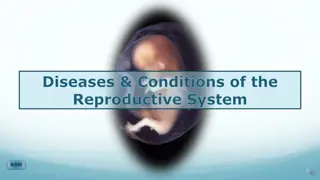Alternative Reproductive Techniques in Fertility Treatments
Alternative reproductive techniques such as Gamete Intra-Fallopian Transfer (GIFT) offer options beyond traditional in vitro fertilization for women facing certain infertility challenges. GIFT involves transferring washed sperm and harvested ova to the fallopian tube via laparoscopy, allowing fertilization and cleavage to occur naturally. This method has shown success in pregnancies and provides a less complex approach compared to IVF. The concept of test tube babies, pioneered in the late 20th century, has revolutionized assisted reproductive technology by enabling the creation of human life outside the womb.
Download Presentation

Please find below an Image/Link to download the presentation.
The content on the website is provided AS IS for your information and personal use only. It may not be sold, licensed, or shared on other websites without obtaining consent from the author.If you encounter any issues during the download, it is possible that the publisher has removed the file from their server.
You are allowed to download the files provided on this website for personal or commercial use, subject to the condition that they are used lawfully. All files are the property of their respective owners.
The content on the website is provided AS IS for your information and personal use only. It may not be sold, licensed, or shared on other websites without obtaining consent from the author.
E N D
Presentation Transcript
Gamete- intra- fallopian transfer ( gift)
This is an alternative to in vitro fertilization & embryo transfer for the women with prolonged sterility & at least one patent fallopian tube. This is specially useful where the fimbriae ( a fringe of finger- like projections that surround the infundibulum of a fallopian tube) fails to capture the ovum or in those with cervical factors & sperm antibodies.
Washed sperms & harvested ova are transferred via a laproscope ( telescope having an external light source) to the ampulla of the fallopian tube. Fertilization & cleavage occur in the tube followed by transportation of the blastocyst to the endometrial cavity i.e. uterus. GIFT techniques requires less sophisticated equipment & training. In a series of 500 GIFT operations,192, pregnancies occurred. 38.2%
I.V.F In Vitro Fertilization Test tube babies
In last two decade, tireless efforts of certain biologists have fulfilled the age- old dream of mankind to create human life in the laboratory. This phenomenon is called extrauterine gestation or in vitro fertilization. In vitro are Latin words which literally mean , in glass . The child produced by such a method came to known as a test tube baby. In fact, the production of a test-tube baby involves two main steps 1) in vitro fertilization ( IVF) & 2) embryo transfer ( ET). Historically speaking, the first attempt to produce a test- tube baby was made by an Italian Scientist Dr. Petrucci in 1959, when he began his epoch- making experiment.
The production of a test tube baby involves the following six steps:- 1. Options :- ovulation by natural cycle or hormonal stimulation. 2. Ovarian functions: 3. Follicular aspiration ( Laproscopic or ultrasonograph guided USG- ovum pick up. 4. In vitro fertilization ( IVF) ( Incubation & insemination). 5. Cleavage & 6. Embryo transfer ( ET).
Some days before the surgery, the patient is injected with certain hormones gonadotropin injection which helps the eggs to ripen & assure that more than one egg is produced by the ovary. After the egg has been removed, it is placed in cultures containing human serum & other chemicals, together with the spermatozoa ejaculated by the husband of the patient or of a donor. Within 12 hours after the introduction of sperm, the egg is fertilized. Within 38 hours, it cleaves into two cells, reaching the eight- celled stage within three days ( 72 hours) after sperm penetration & the 16 celled stage or blastocyst stage within 5 days. The developing blastocyst, now ready for implantation,is inserted into the uterus by catheter through the vagina & cervical canal to the womb.
However, prior to implantation of the blastocyst, the uterus of the recepient mother is made fit for receiving the 8 or 16 celled embryo by the hormonal treatment. After implantation, the developmental process follows the regular course. The whole process of test tube baby formation requires a high level of technical skill & advanced facilities. It needs the following precautions: 1. The egg must be taken out only in fully mature condition. 2. The egg as well as the culture medium must be kept at proper temperature. 3. Infection of any kind must be avoided at all levels. 4. Receipient mothers Uterine wall must be properly prepared to receive the blastocyst. Careful watch must be maintained throughout the gestation period to ensure that the embryo is not expelled.
ADVANTAGE OF TEST TUBE BABY Advantages. The chief advantage of in vitro fertilization is it enables a woman with diseased or missing oviducts to give birth to her own child Even mothers who have damaged ovaries can hope to get children,if another woman is willing to donate her ova. For the woman whose uterus do not allow the spermatozoa to move up & men who have a low sperm count, this method can be ideally adopted.
